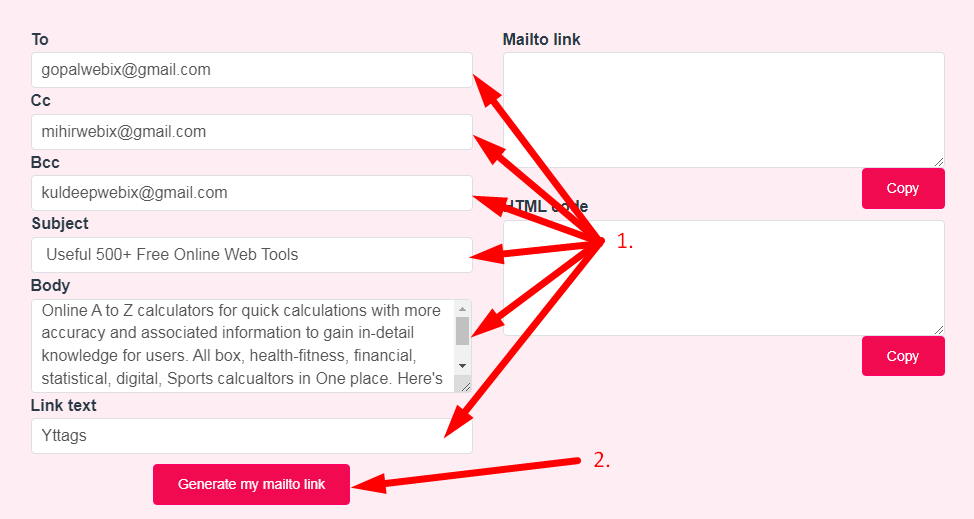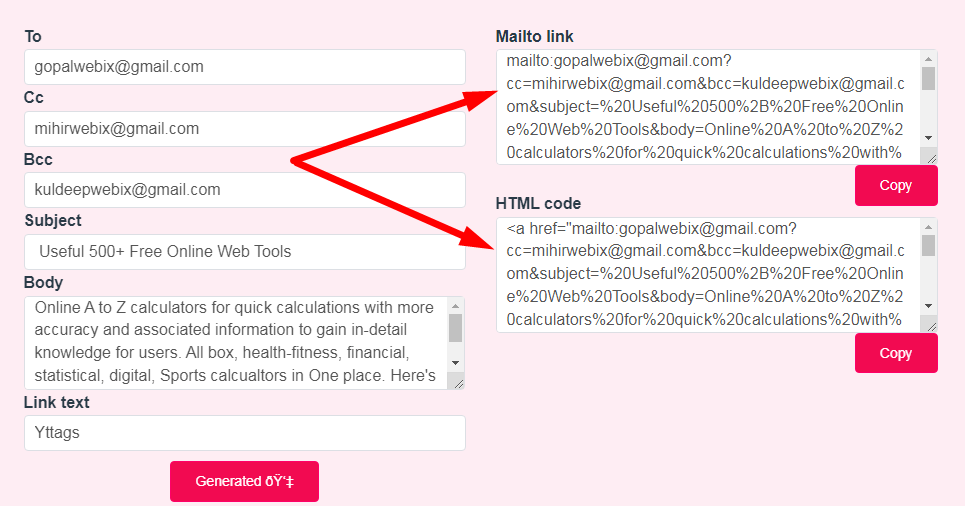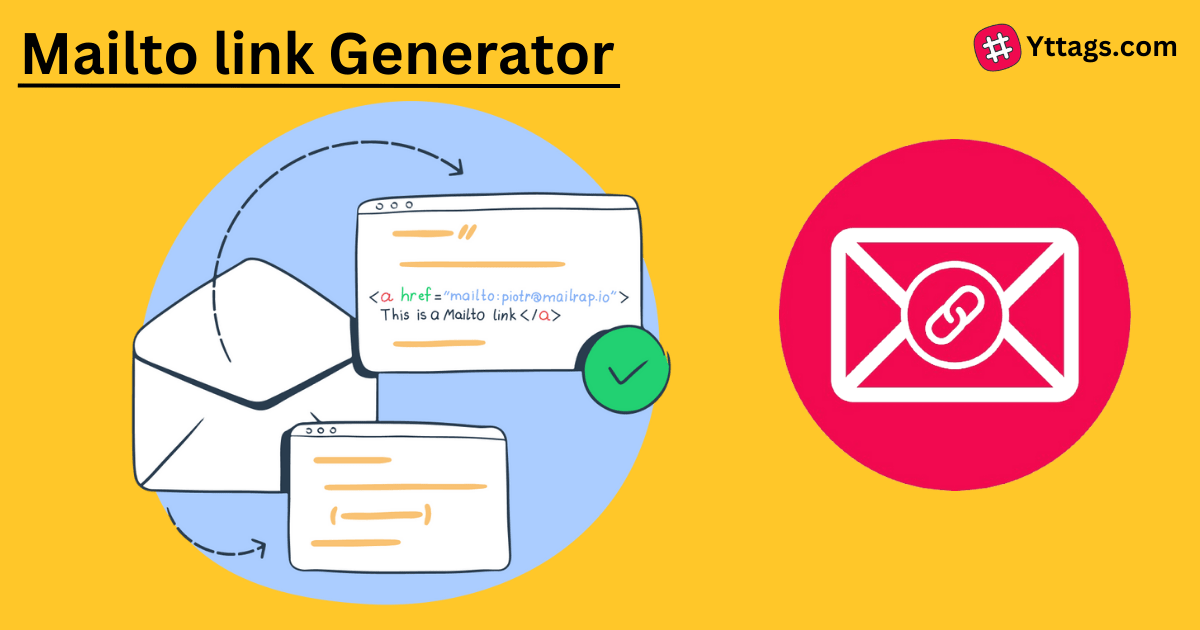Mailto link Generator
Create mailto links with subject, body, bcc, cc and generate HTML code with this simple mailto link generator.
If you use this great tool then please comment and/or like this page.
Average Rating: Tool Views: 474
Average Rating: Tool Views: 474
Subscribe for Latest Tools
How to use this Mailto link Generator Tool?
How to use Yttags's Mailto link Generator?
- Step 1: Select the Tool

- Step 2: Enter The Following Options And Click On Generate my mailto link Button

- Step 3: Check Your Mailto link Generator Result

Mailto link code and markup generator with subject, body, cc and bcc. Quickly and easily generate code for those annoying mailto links.
If you want to link to Mailto Link Generator page, please use the codes provided below!

FAQs for Mailto link Generator
What is a Mailto link Generator?
A Mailto link generator is a tool or code snippet that helps create clickable email links (mailto links) for websites, allowing users to compose and send emails to a specified email address by clicking the link.
What is the purpose of mailto?
mailto is a Uniform Resource Identifier (URI) scheme for email addresses. It is used to produce hyperlinks on websites that allow users to send an email to a specific address directly from an HTML document, without having to copy it and entering it into an email client.
Why don't mailto links work?
If mailto links don't open for you the way they should, a quick look at the system or browser settings should do the job. In Windows, head to Settings -> Apps -> Default apps. Scroll down and pick “Choose default apps by protocol” from the menu. For 'Mailto', choose the client of your choice.
Is it safe to use mailto?
Spammers usually use programs that search automatically for mailto entries on websites: Spam bots search through the source text looking for the string “mailto” as well as the @-symbol. It is also for this reason that website operators should avoid using e-mail addresses as links.
Why does mailto not work in Chrome?
First, make sure you allow service handlers in Chrome, then allow Gmail to use its service handler. In Google Chrome, open Settings,click Advanced, and under Privacy and Security, click on Content Settings. Click on "Handlers" and set the option "Allow sites to ask to become default handlers for protocols" to "on".